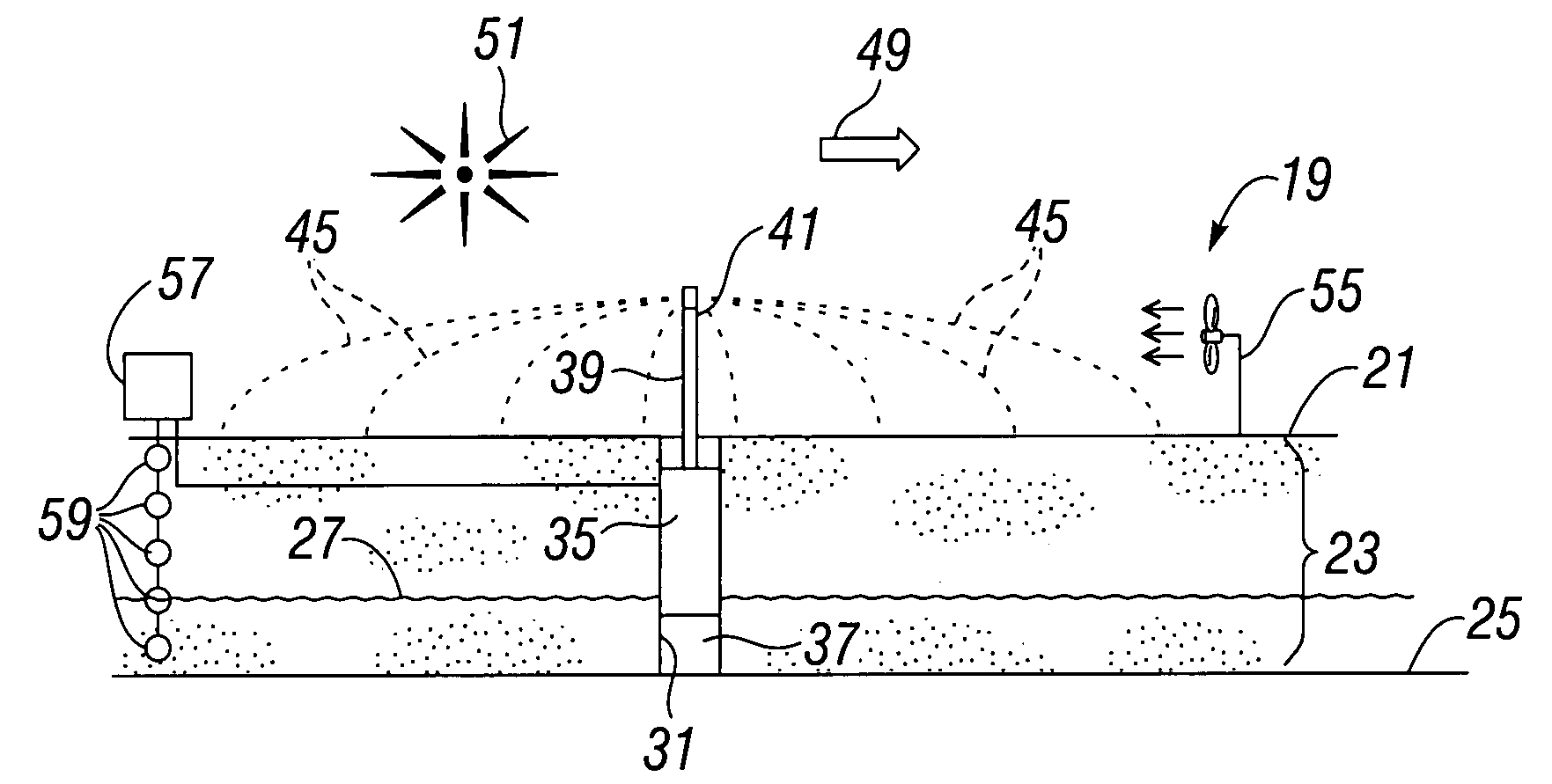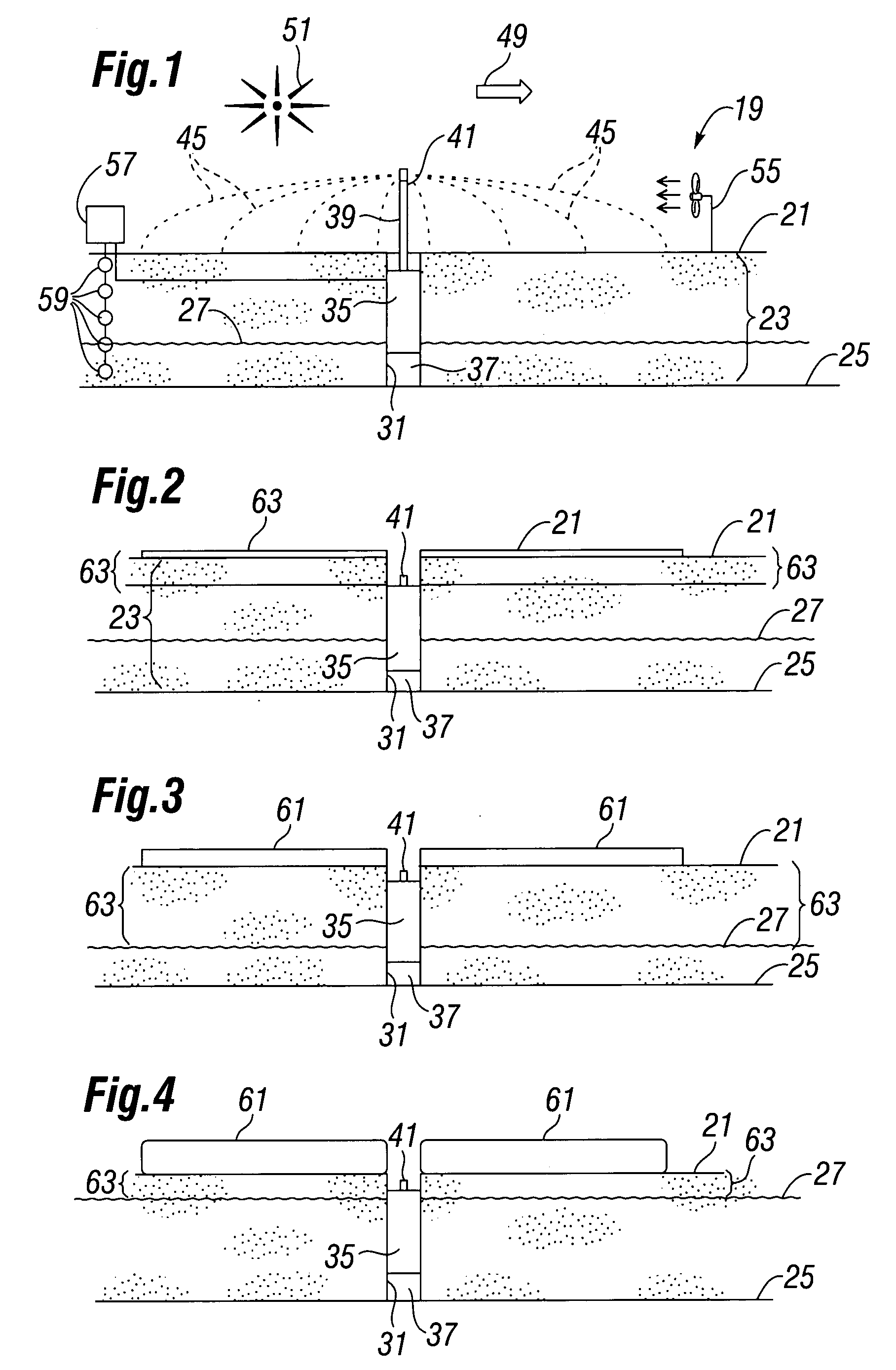Salt brine capillary crystallization
a technology of salt brine and capillaries, applied in separation processes, chemistry apparatuses and processes, evaporation by spraying, etc., can solve the problems of excessive coastal land, too expensive salt production land, and process investments that require extensive investment, so as to minimize the infiltration rate. , the effect of minimizing the downward and lateral seepag
- Summary
- Abstract
- Description
- Claims
- Application Information
AI Technical Summary
Benefits of technology
Problems solved by technology
Method used
Image
Examples
Embodiment Construction
[0042]A description with the aid of schematics will be of assistance in fleshing out the further possibilities and illustrating the advantages of the inventive components and steps herein. Referring to FIG. 1, a sectional schematic looking into a sectional view of the ground of a potential configuration in which the system and process of the invention may be used. In this particular example, a central spray configuration will be shown, although any number of land and spray configurations can be used.
[0043]It is known to have circular fields and rectangular fields with a wide variety of watering and spraying mechanisms. In a round field, a spraying mechanism may be centrally located or it may be made of a linear rotational spraying mechanism which circles a round field like the second hand on a clock. A rectangular field can have a similarly moving line of sprinklers along its length. Any number of configurations are possible.
[0044]Ideally a salt brine production system 19 on a sabkh...
PUM
 Login to View More
Login to View More Abstract
Description
Claims
Application Information
 Login to View More
Login to View More - R&D
- Intellectual Property
- Life Sciences
- Materials
- Tech Scout
- Unparalleled Data Quality
- Higher Quality Content
- 60% Fewer Hallucinations
Browse by: Latest US Patents, China's latest patents, Technical Efficacy Thesaurus, Application Domain, Technology Topic, Popular Technical Reports.
© 2025 PatSnap. All rights reserved.Legal|Privacy policy|Modern Slavery Act Transparency Statement|Sitemap|About US| Contact US: help@patsnap.com


